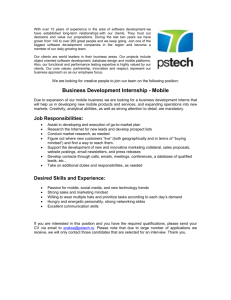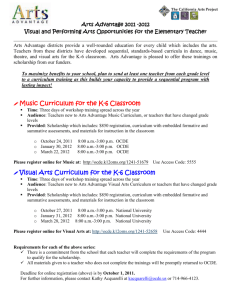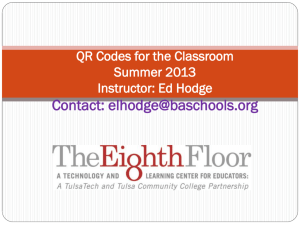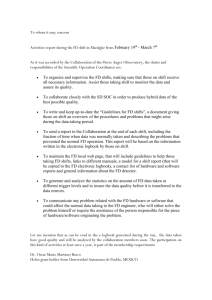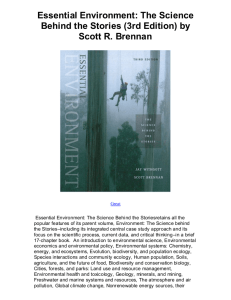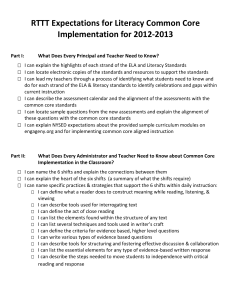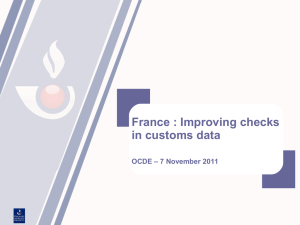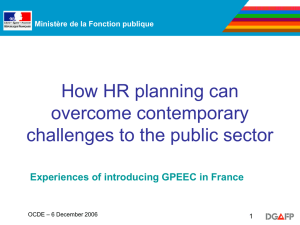Utilizing Social Emotional Learning in the Common Core
advertisement
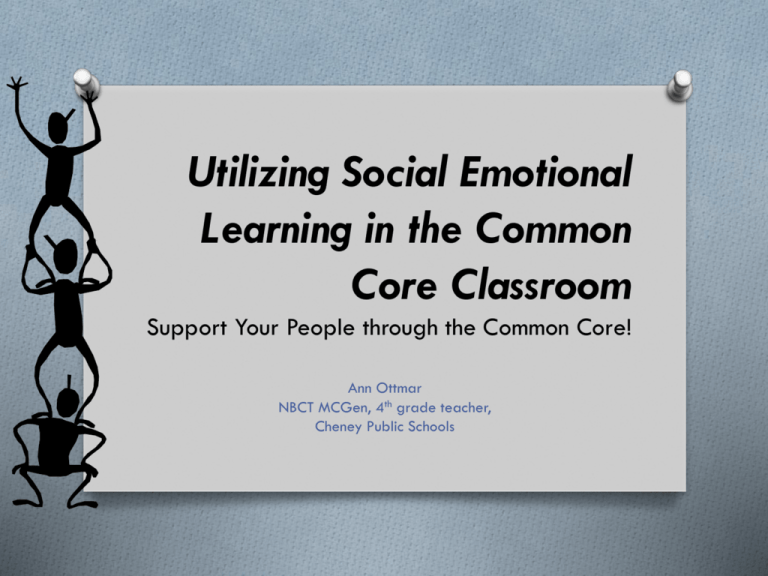
Utilizing Social Emotional Learning in the Common Core Classroom Support Your People through the Common Core! Ann Ottmar NBCT MCGen, 4th grade teacher, Cheney Public Schools Supporting the Transition to Common Core for students: The Major Shifts Mathematics Shifts O Regular focus with the important standards, deep not wide. O Coherence: connect and link within and across grades, building understanding over time. O Rigor: develop a balance among conceptual understanding, procedural skill/fluency, and application. ELA Shifts O Regular practice with complex text balanced between fiction and nonfiction. O Reading, writing and speaking grounded in evidence from text, both literary and informational. O Building knowledge and academic language through content-rich nonfiction. Habits Of Mind: Practices and Capacities How does the brain work? What the brain needs to learn! Choice: Cognitive Environment Problem Solving and Positive Brain Growth Challenge: Accomplishment & Self-Esteem Choice: Problem Solving and Positive Brain Growth Reflection: Analysis & Synthesis Feedback: Lowers Stress and Offers Sense of Well-Being Ritual: Framework for Learning Recreated from Differentiation through Novelty: Attention & Learning Reflect and Consider: O You are familiar with the Common Core standards and the major shifts for ELA and Math. You also now have some information about how the brain learns and what it needs. Turn and Talk: O Where do you see connections? O What words or thoughts are swirling in your mind? O What or how can you use this information to change your practice? In the face of Common Core what we really need is a Mindset Shift! Social Emotional Learning Success Edutopia.org Social Emotional Learning within the Common Core Cognitive Environment Social/Emotional Environment Physical Environment Now our brains can be ready to LEARN!!! Manage Relationships Be Empathetic Handle our own Emotions Understand Emotions Safety: Everyone is safe here! Nutrition: Healthy food = a working brain & body! Water: Hydration is key! Color/ Music/ Humor: Brains can get what they need! Lighting/ Temperature: Not too bright or dark, too hot or cold! Brennan 2011; compilation of Maslow and Sprenger Reflect and Consider O How do these key components of Social Emotional Learning relate to the Habits of Mind and the Practices and Capacities of the Common Core? O From your role in your school, where do you see yourself tackling these? O Walk and Talk – Move through the room, share what is on your post-it, keep moving and sharing! What other skills are needed for success? O Cognitive Domain is the focus of critical thinking, reasoning, creativity, processes, innovation, strategies and knowledge. O Intrapersonal Domain (Metacognition = Thinking about our thinking.) includes grit, perseverance, focus, work ethic, passion, flexibility, positive self-evaluation, being open to new ideas and appreciating diversity. O Interpersonal Domain expressing ideas, communication, collaboration, conflict resolution, leadership, and empathy. Note: Intrapersonal expertise is the biggest predictor of lifelong success in applying the other two! http://www.ocde.us/CommonCoreCA/Documents/The%2021st%20Century%20C ompetencies%205Cs.pdf Goal Setting and Affirmations Building Language, Communication and Connections Choose a word – WHO ARE YOU IN THIS ROLE? O What do you see as your role with teachers, with students, with families, with the community? O How can this role support the move to Common Core? O Choose a word, add it to a label, post it on the poster. How Social Workers can specifically assist teachers with students who need more O Executive Functioning – requires opportunities for projects and other assignments that take time to complete, with the ability to plan out what to do over time, employ study skills and long-range planning. O Self-Regulation – play games to help build resilience in the face of temporary set-backs (Germeroth and Day-Hess 2013). Help students monitor their own learning and begin to reflect on their own progress to help them track their own goals, learning strategies and success; support them in noticing that they don’t always need someone else to provide feedback on how they are doing. O Emotional tolerance and stamina, build relationships, help students connect their thoughts and actions, relate to point-of-view in literature, promote growth mindset, seek out mentors in the community. O Art with understanding emotions, acting our rolse of characters in books and other resources to experience the feelings without having to own them yet! Your Turn O Grab an index card from the center of your table and write down two goals and an affirmation about what you have learned here today and want to implement. A Last Thought – How to Start a Movement! Derek Sivers Ted Talk Thank you for listening! Contact me at: O aottmar@cheneysd.org O breottmultiage@gmail.com O www.themindsofbreott.blogspot.com Resources Orange County Department of Education website: http://www.ocde.us/Pages/default.aspx http://www.ocde.us/CommonCoreCA/Documents/The%2021st%20Century%20Competencies%205Cs.pdf Brennan, Celina (2011) What the Brain Learns graphic recreated from Differentiation through Learning Styles and Memory, by M. Sprenger (2008) Brennan, Celina (2011) Social Emotional Pyramid compilation of Maslow and Sprenger The Learning Brain by the Learning Pod https://www.youtube.com/watch?v=cgLYkV689s4 5 Keys to Social Emotional Learning from edutopia http://www.edutopia.org/keys-social-emotional-learning-video Dweck, C. (2007) Mindset: The Psychology of Success Ballantine Books; Reprint edition. Germeroth, C. & Day-Hess, C. (2013) Self-Regulated Learning for Academic Success ASCD, Alexandria, VA. ASCD Aria. Goal Setting and Affirmation resource: http://sprinkleteachingmagic.blogspot.com/2014/01/student-goal-settinggold-standard.html How to Start a Movement by Derek Sivers Ted Talk http://www.youtube.com/watch?v=V74AxCqOTvg

